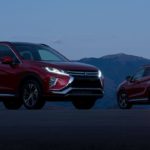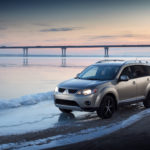Mitsubishi had a long history of success in various motorsports before the very first Lancer Evolution hit the market. Its very first foray into the world of racing was the 500 Super Deluxe, which finished first, second, and third in the “Under 750 cc” category at the 1962 Macau Grand Prix. By 1985, Mitsubishi won the Dakar Rally with its Pajero Evolution, but the company didn’t stop there.
Mitsubishi aimed higher and set its sights on the World Rally Championship (WRC) with the mighty Galant VR-4. Packed with a turbocharged, 2.0-liter four-cylinder engine under the hood, the Galant VR-4 was a huge success, but as rally events moved to tighter courses, it eventually got too big for the scene. That’s when the Lancer Evolution I hit the market.
Released in 1992, the Mitsubishi Lancer Evo came with the same 4G63T engine as the Galant VR-4 but crammed in a smaller body. There were 10 iterations of the Lancer Evolution, but which ones truly stood out?

Evolution VI (1999 – 2001) – The Rally Superstar
The Mitsubishi Lancer Evolution VI was a step up from the Evo V, with a brand-new powertrain control module (PCM), a bigger intercooler, and an upgraded radiator. It’s no surprise then that it ruled the world of motorsports with four-time World Rally Champion (WRC) Tommi Mäkinen behind the wheel.
The legendary Evo VI came in the usual RS and GSR versions, along with two new models: the RS2 and RS Sprint. However, the most popular model is arguably the Tommi Mäkinen Edition. Sometimes referred to as the “Evo 6.5,” the Tommi Mäkinen Edition had the same engine as the base model, but it had a titanium turbine that helped spool speeds and made peak torque available at a lower rpm. Vents on the front bumper replaced the standard fog lights, and it had a full red paintwork with the WRC stripes.
Unfortunately, Mitsubishi still wasn’t exporting the Evo to the United States, leaving American fans longing for the rally car from afar.
- Engine Specs: 122 cu in, 1997cc turbocharged and intercooled DOHC 16-valve 4-in-line
- Power: 276 brake horsepower (bhp) @ 6,500 RPM
- Torque: 274 lb-ft @ 3,000 RPM
- 0 to 60 time: 5.1 seconds
- Quarter-Mile Time: 13.9 seconds @ 102 mph
- Top Speed: 148 mph
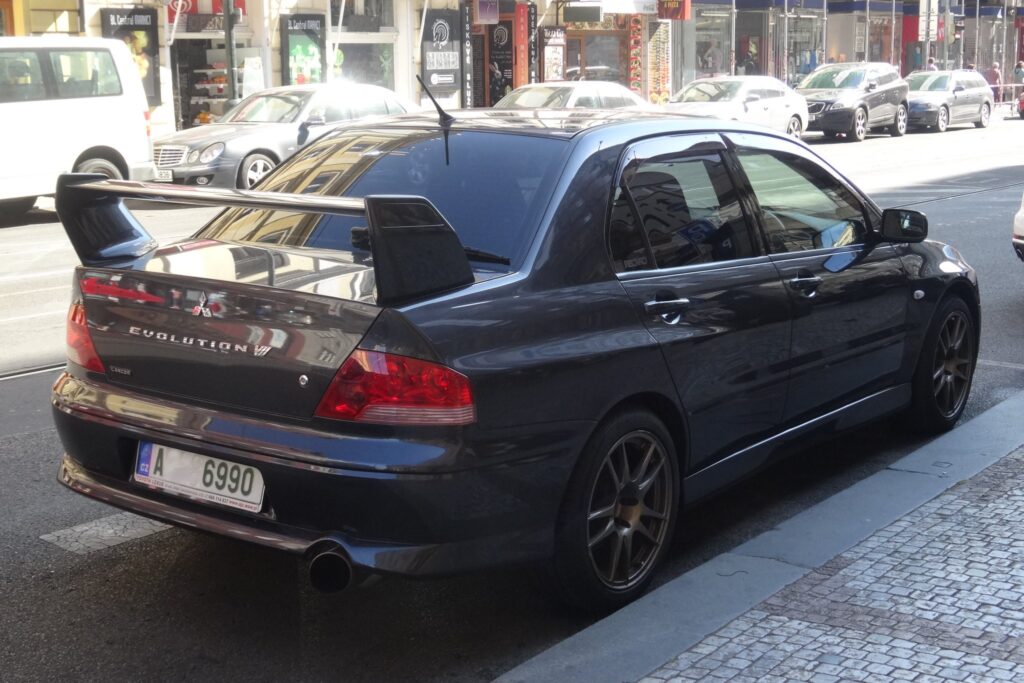
Evolution VII (2001 – 2003) – Brand-new Look, Brand-new Feel
The Evo VI was a tough act to follow, but Mitsubishi didn’t shy away from making a statement with a complete redesign for the Evolution VII. Its exterior carried less flair than the Evo VI, but the interior featured velour and full leather Recaro seating.
The Mitsubishi Lancer Evolution VII still had the same 4G63T turbocharged engine, but it also had a heavier chassis and a brand-new feature called the Active Center Differential (ACD). Paired with the Evo’s active yaw control, the ACD gave the Evo VII much better four-wheel drifting ability.
The Evo VII might not be as successful as the Evo VI on the rally course, but don’t let that fool you. This seventh-generation Lancer Evolution can produce 276 bhp and 282 lb-ft of torque.
- Engine Specs: 1997cc in-line 4 cylinder, turbocharged
- Power: 276 bhp @ 6,500 RPM
- Torque: 282 Ib-ft at 3,500 RPM
- 0 to 60 time: 5.0 seconds
- Quarter-Mile Time: 14.6 seconds @ 110.0 mph
- Top Speed: 140 mph

Evolution VIII (2003 – 2005) – The First American Evo
2003 was a dream come true for Mitsubishi Lancer Evolution fans in the US; the Evo VIII finally hit the US market. The Evo VIII wasn’t dramatically different from the Evo VII, but some trims did offer a new six-speed manual transmission. It also had new 17-inch alloy wheels and Bilstein shocks for better handling.
Higher trim levels came with sleek sports seats, air-conditioning (A/C), and power windows. For audiophiles, the Evo VIII also offered a high-quality sound system and a subwoofer mounted in the trunk.
During its time, the Lancer Evolution VIII sold for around $29,000, which was double the regular Lancer. Even at that price, many people were willing to pay for its impressive power. The Evo VIII could produce 261 bhp and reach zero to 60 mph in 5 seconds. Its 0 to 60 time was on par with the BMW M3, which sold for 60% more than the Evo VIII.
- Engine Specs: 1997 cm3 L4 cylinders
- Power: 271 bhp @ 6,500 RPM
- Torque: 273 lb-ft @ 3,500 RPM
- 0 to 60 time: 5.1 seconds
- Quarter-Mile Time: 13.9seconds
- Top Speed: 141 mph
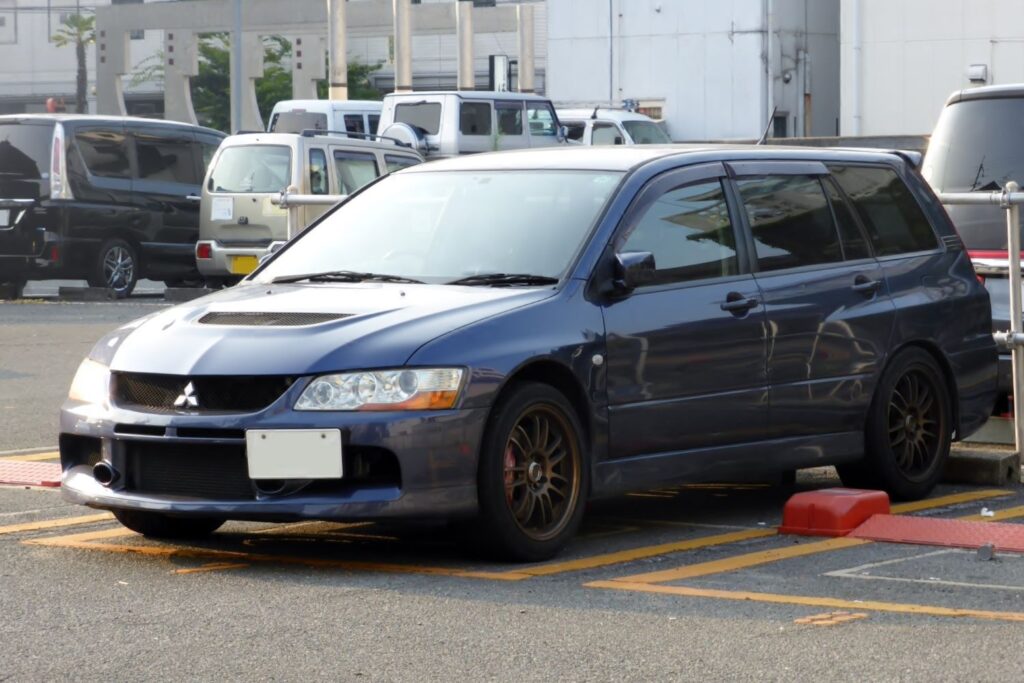
Evolution IX Wagon (2005 – 2007) – Looks Can Be Deceiving
Most people wouldn’t expect a wagon to be as powerful as a rally car, but Mitsubishi defied all expectations with the Lancer Evolution IX Wagon. At first glance, the Evo IX Wagon looked like every other five-door family car on the market. However, one look under the hood proved otherwise.
The Evo IX Wagon had the same powerful turbocharged 2-liter engine as the other Evo IX models, but it also offered the option of an automatic transmission. It also featured an ACD and a three-way tarmac/gravel/snow control system.
The Lancer Evo IX Wagon didn’t have Super Active Yaw Control (AYC), but it had better front-to-rear weight distribution, thanks to the extra 70 kilograms sitting over its rear wheels.
Known as the fastest-cornering wagon on Earth, the Evo IX Wagon is coveted by many. Unfortunately, Mitsubishi only produced 2,500 units, with none of them destined for export. It remains to this day a limited edition Evo coveted by both racers and collectors alike.
- Engine Specs: 122 cu in turbocharged and intercooled DOHC 6-valve inline-4
- Power: 286 bhp @ 6,500 RPM
- Torque: 289 Ib-ft at 3,000 RPM
- 0 to 60 time: 4.8 to 5.5 seconds
- Quarter-Mile Time: 13.5 to 14.5 seconds
- Top Speed: 150 mph
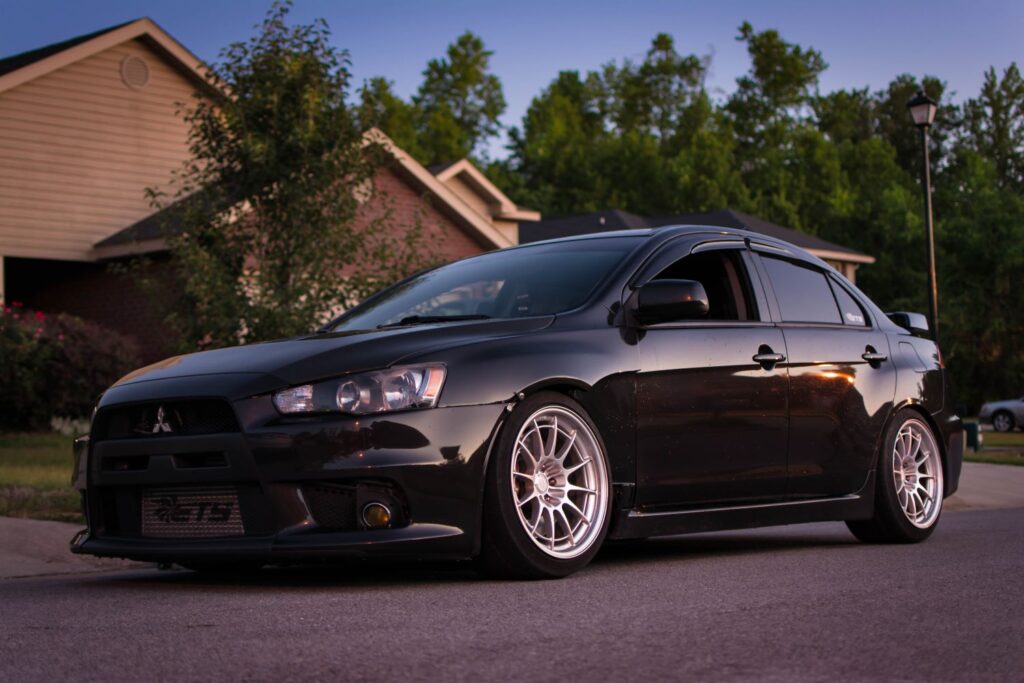
Evolution X (2007 – 2016) – The Last Evo
Released on the heels of the Evo IX Wagon, the Evolution X was the last of the legendary Lancer Evolutions. Its sharp-edged and aggressive look gave it a more modern feel, but what truly made it stand out among other generations was its brand-new engine.
Unlike previous Evos, the Evo X featured an aluminum cylinder block engine that was 12 kilograms lighter than the original cast iron engine. Both intake and exhaust valves also featured the Mitsubishi Innovative Valve Timing Control System (MIVEC).
Previous Evos offered both manual and automatic transmission options, but the Evo X came with a dual-clutch unit called the Twin Clutch Sports Shift Transmission or the TC SST. It featured six ratios and produced an impressive 276 brake horsepower.
- Engine Specs: 1998cc in-line 4 cylinder, turbocharged
- Power: 295 bhp @ 6,500 RPM
- Torque: 300 lb-ft @ 3,500 RPM
- 0 to 60 time: 4.9 seconds
- Quarter-Mile Time: 13.5 seconds @ 101 mph
- Top Speed: 155 mph

Despite ostensibly sharing the same lineage, the Mitsubishi Lancer and Lancer Evo have many differences. For instance, the Lancer lacks the strut bar, support bars, and uni-body supports that enables the latter to safely and effectively participate in rallies. Thus, there’s less intercompatibility of parts between the Lancer and Lancer Evo than you might think. If you’re replacing an old or damaged part on your Lancer Evo with something used in a Lancer, check it to ensure it’s compatible with the Lancer Evolution.
Any information provided on this Website is for informational purposes only and is not intended to replace consultation with a professional mechanic. The accuracy and timeliness of the information may change from the time of publication.




